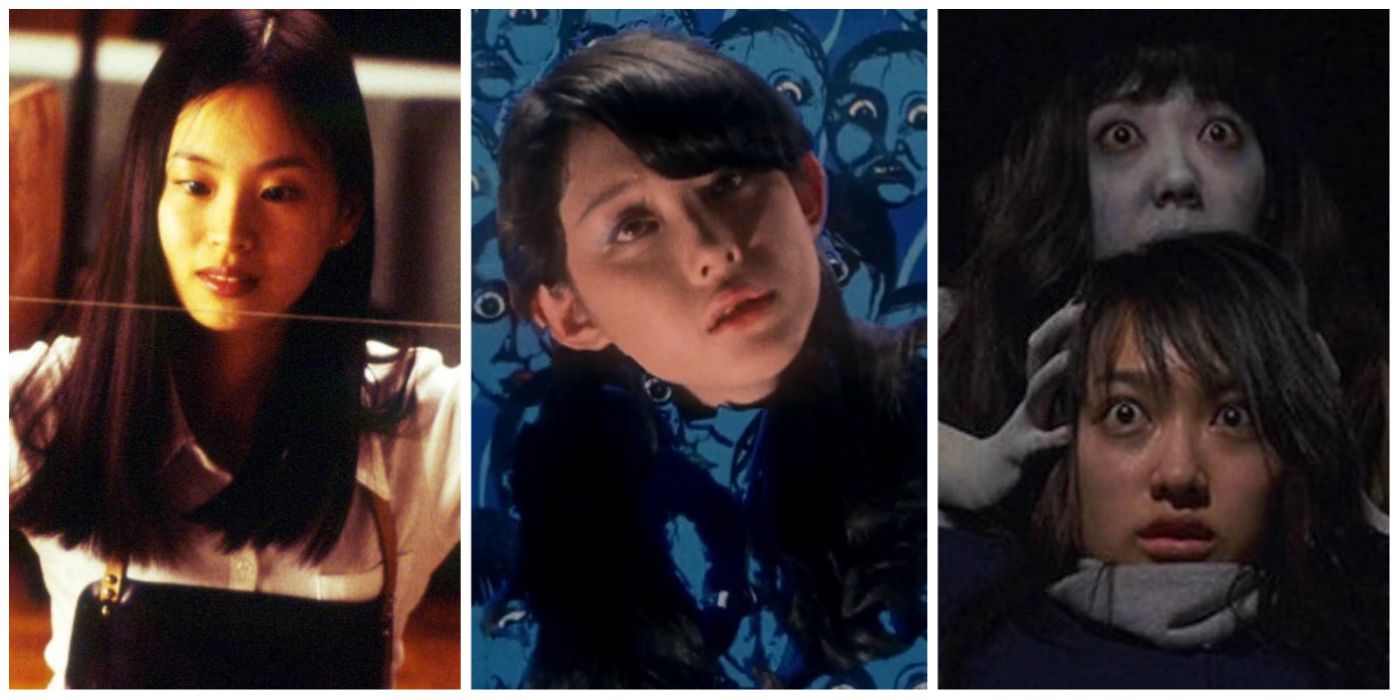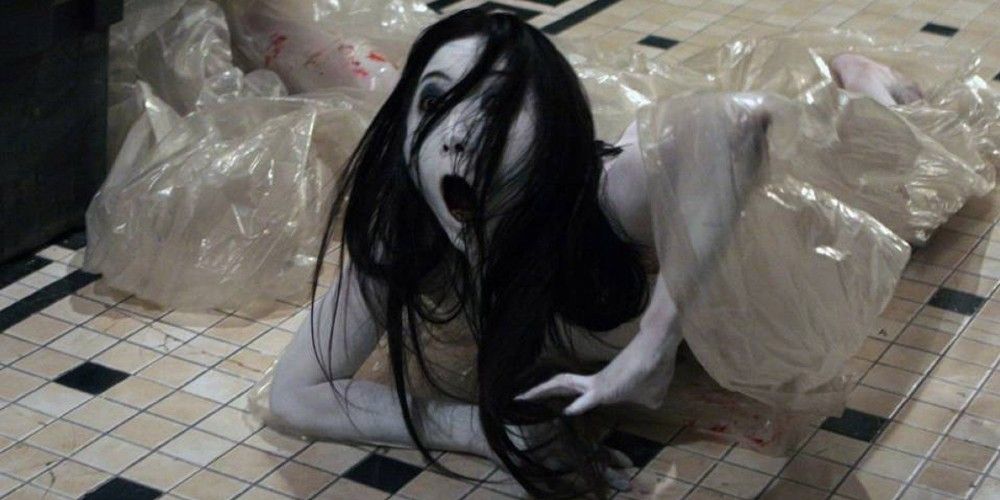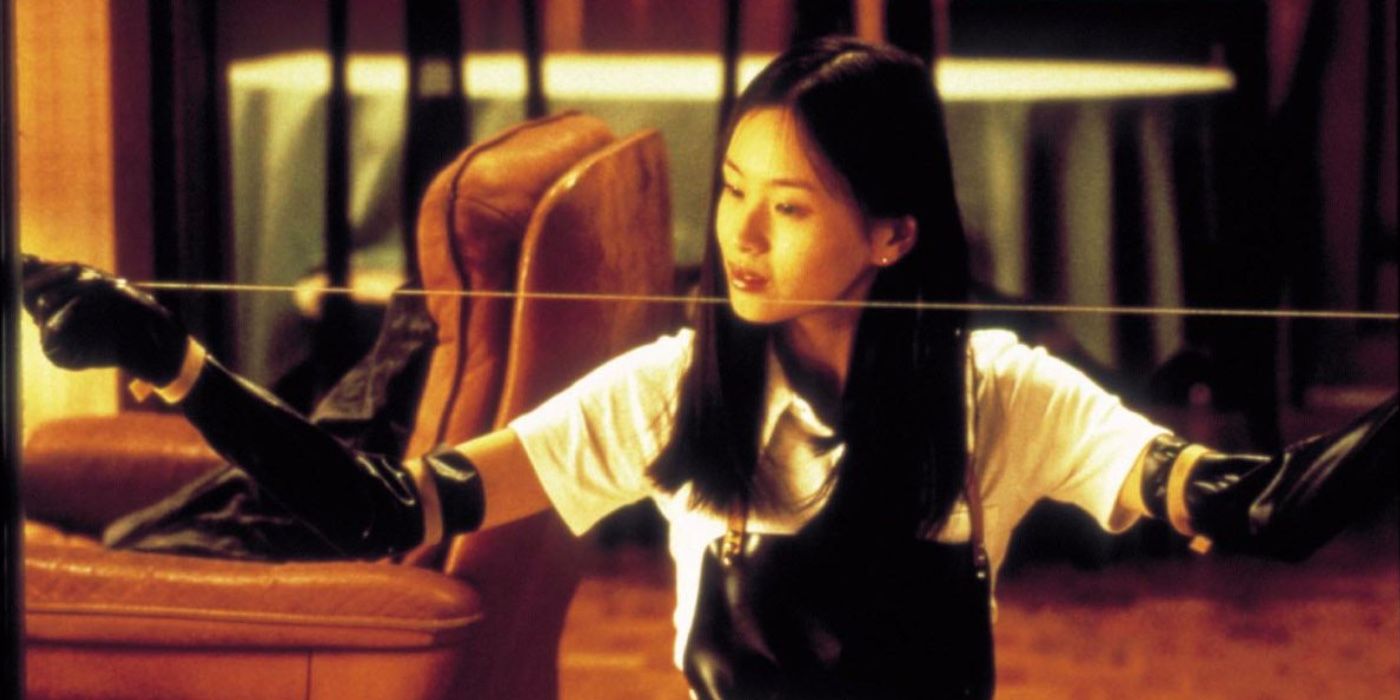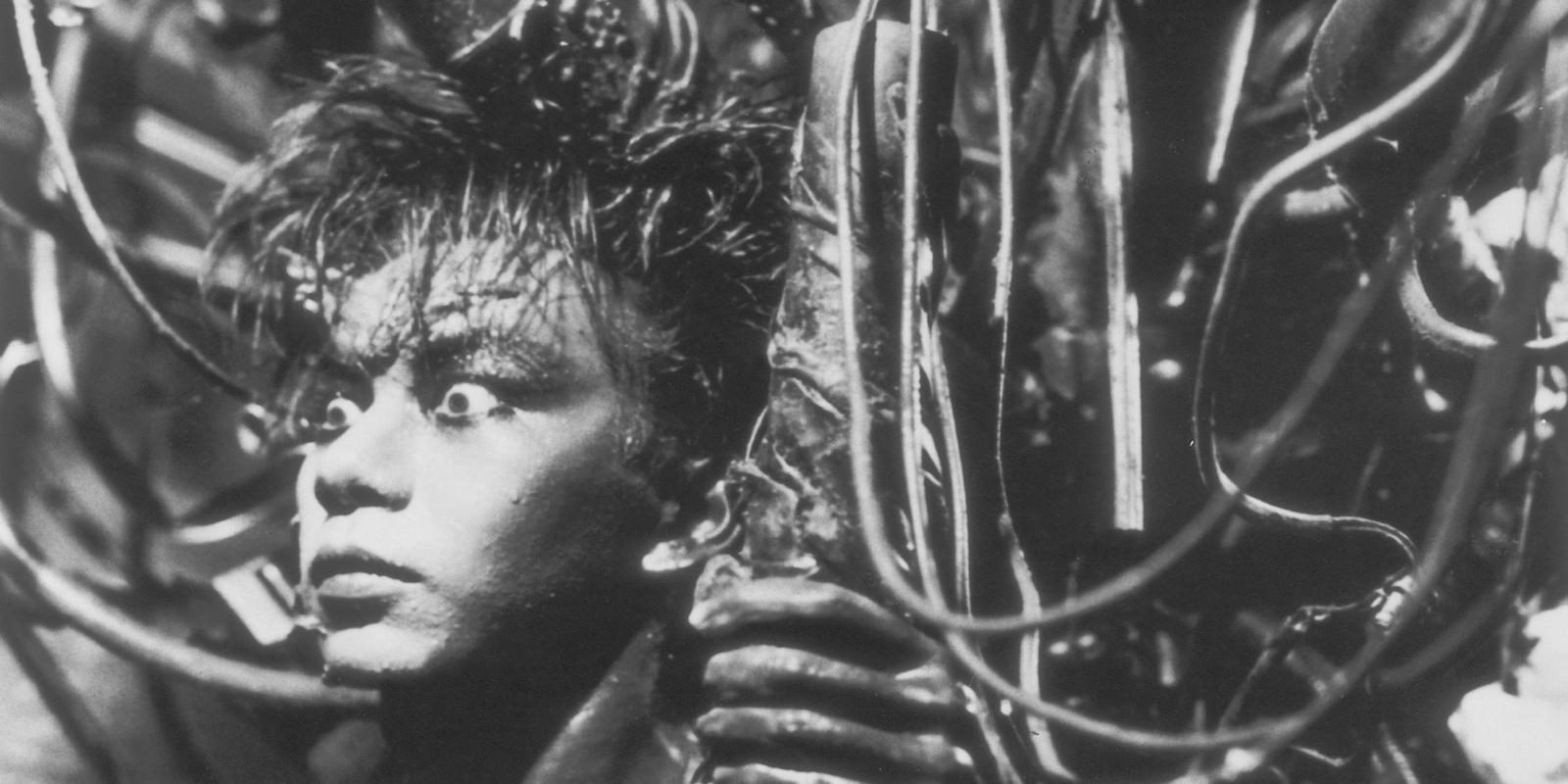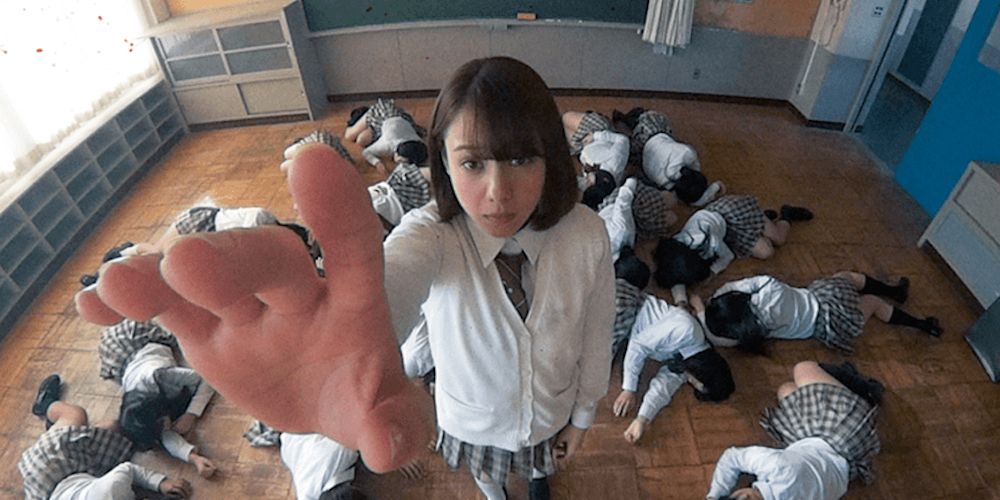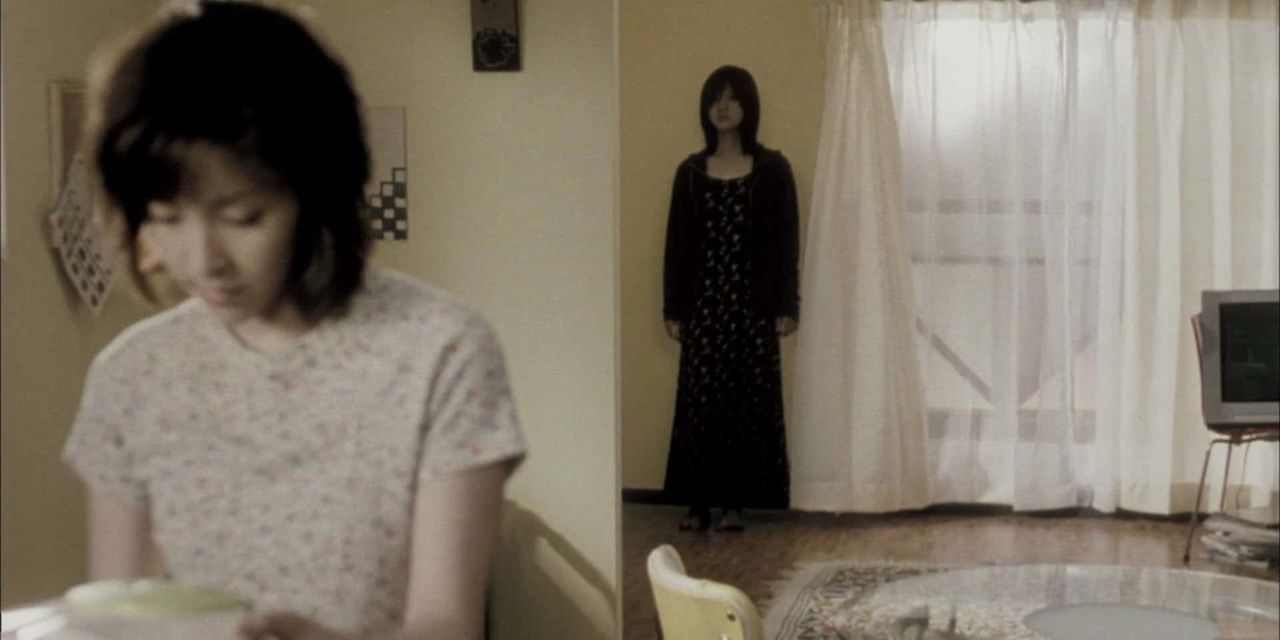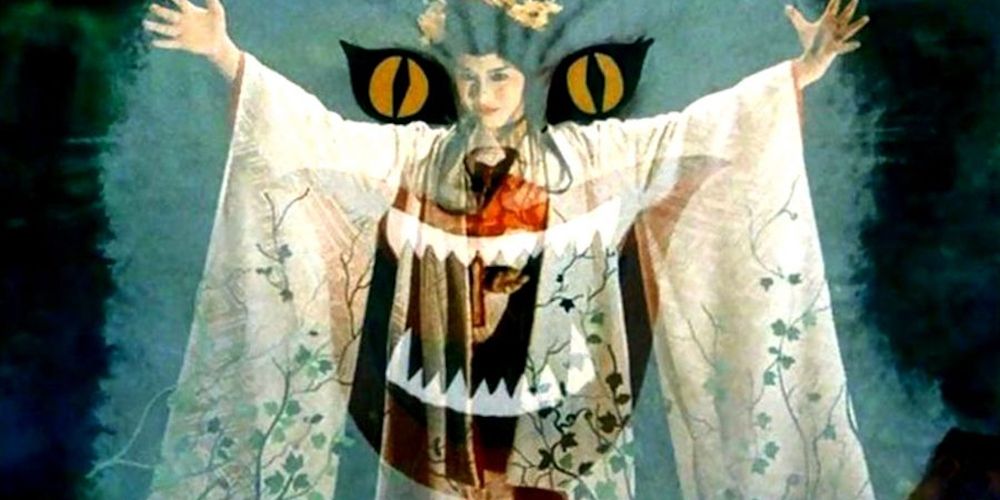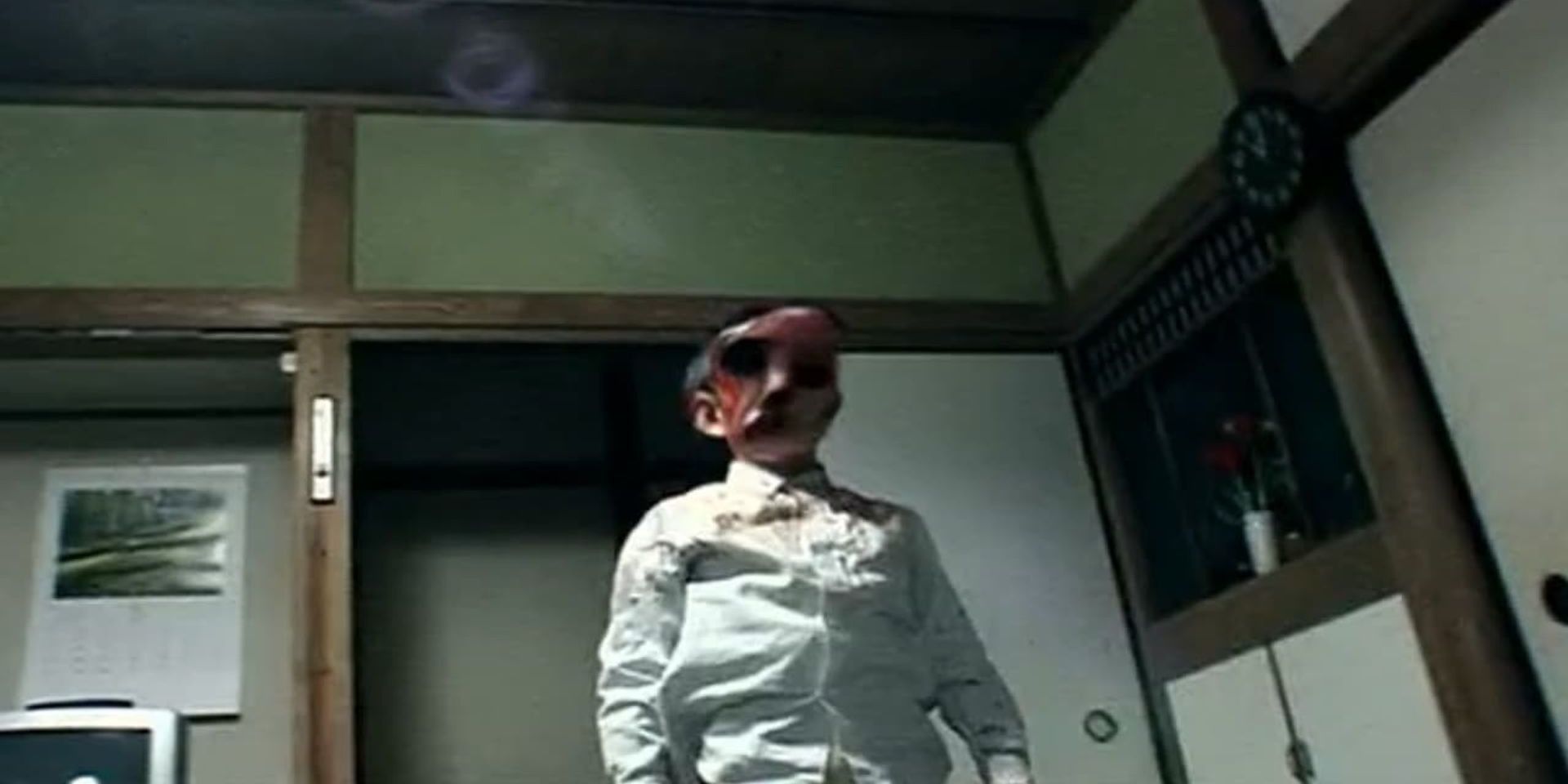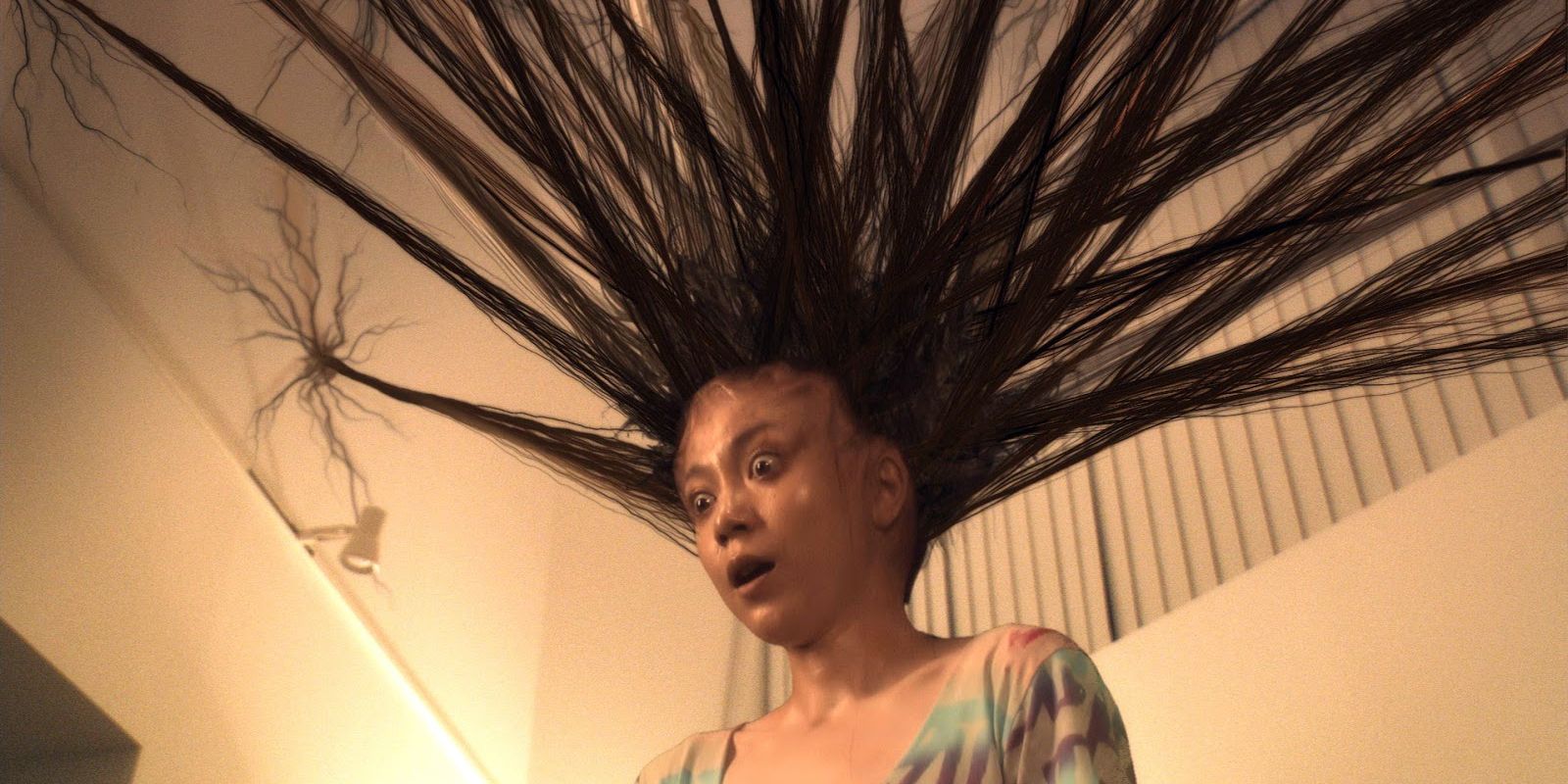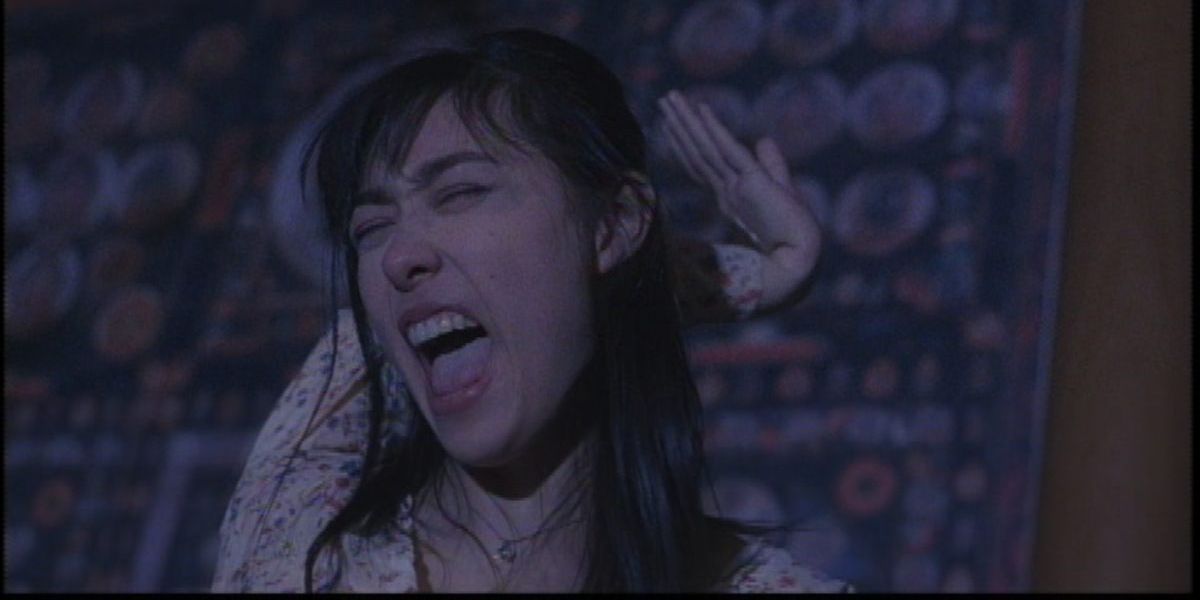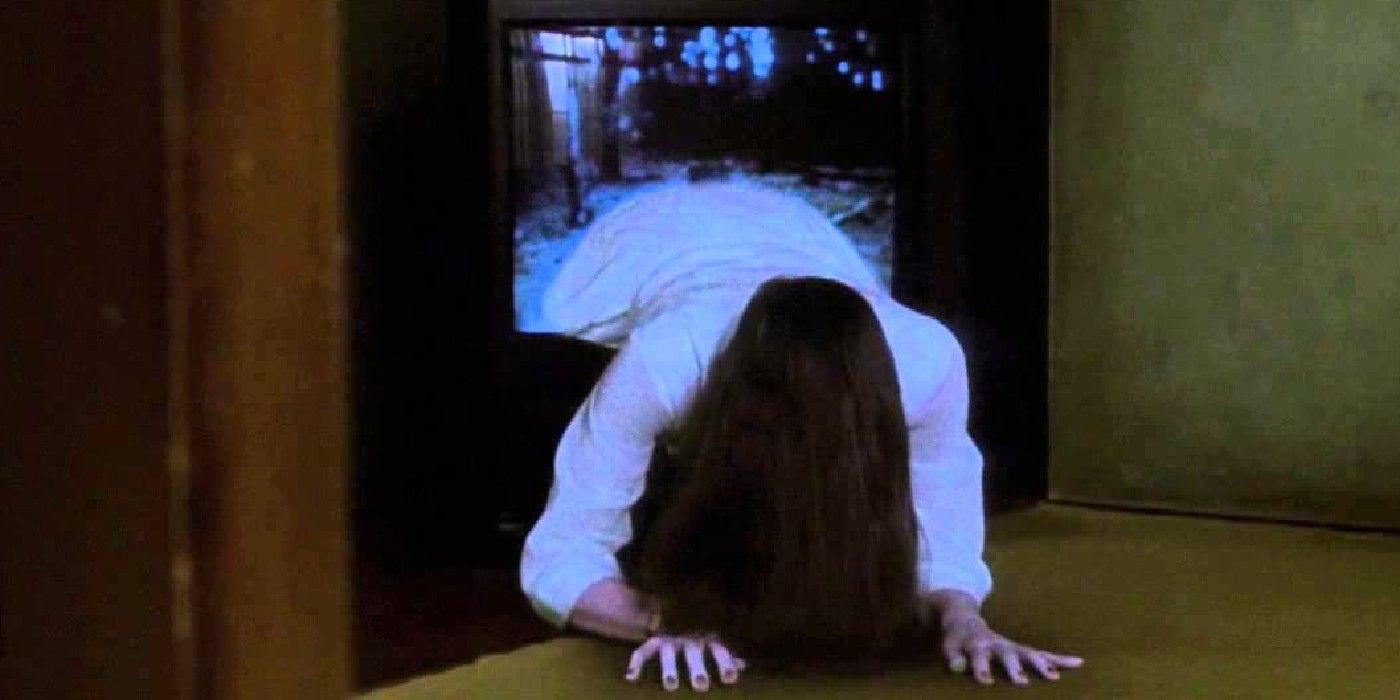Western horror films have followed a certain trajectory and subscribed to distinct trends across different decades. This remains true today, but the decision to import horror films from international markets gained traction during the 2000s.
Looking to international horror films is still one of the best ways to discover new genre classics and emerging horror talent. There are groundbreaking horror films from all across Asia. However, Japan has some particularly frightening selections that will satisfy anyone who's tired of the tired Western horror tropes.
10 Eternal Ghost Grudges Run Deep In Ju-On: The Grudge
Takashi Shimizu's Ju-On series has had a healthy life thanks to its American Grudge counterparts, which cleverly exist within the same universe as Shimizu's Japanese originals. The Ju-On sequels aren't as good, but that's only because the simple premise is so perfectly handled in the first film.
The horror movie is a twist on the haunted house genre, with a building becoming the recipient of a vengeful evil when a traumatic death occurs there. There's a certain hopelessness to the Ju-On films because once somebody encounters these curses, it's impossible to escape. Franchise icons Kayako and Toshio have been endlessly copied in the J-horror genre.
9 The Pursuit For The Perfect Partner Becomes A Fight for Survival In Audition
Takashi Miike has directed more than 100 movies, many of which have proven themselves to be landmark films. Miike adeptly ricochets between colorful children’s programming and ultra-violent adult films, and Audition firmly fits into the latter. It is considered by many to be one of the scariest movies of all time.
Audition is a horror movie that starts off almost like a subversive romantic comedy. However, the seemingly deceived suitor quickly turns into the worst lover imaginable. Audition succeeds as an unpredictable morality tale that has a truly vicious final act that’s hard to not wince over.
8 Nightmarish Body Horror Is Presented Like Nothing Else In Tetsuo: The Iron Man
Released in 1989 in stark black-and-white to be evocative of a documentary, Tetsuo: The Iron Man feels like a nightmare come to life. A man who is obsessed with metal experiences a death and resurrection that turns him into an iron-based anti-hero.
Tetsuo: The Iron Man pulls from the body horror of David Cronenberg, superhero stories, and Japanese folklore. Tetsuo II: Body Hammer appropriately builds upon the tension and abject body terror of its predecessor, but the original is still the slightly superior picture.
7 Death Games Play Out Across Multiple Murderous Realities In Tag
Sion Sono is a visionary filmmaker who's fearlessly tackled every genre imaginable and created eclectic movies that appeal to audiences of all ages. Sono's horror contributions are either bleak serial killer dramas and indictments of humanity or more exaggerated adventures like 2015's Tag.
Tag becomes a meditation on destiny and identity as Mitsuko, a boring high school girl, suddenly finds herself at the center of carnage across multiple surreal worlds. Tag is a chaotic experience that makes for an entertaining blind watch as the audience is as helpless as Mitsuko.
6 The Internet Reveals Vengeful Spirits With Angry Agendas In Kairo
One of the most exciting elements of horror is how it's able to incorporate changes in society and technology into classical supernatural ideas like ghosts. Kairo, otherwise known as Pulse, is Kiyoshi Kurosawa's 2001 horror film that portrays the Internet as a holding cell for dark spirits who haven't properly crossed over to the afterlife.
Kairo's use of shadow, static, and subdued special effects to hint at its melancholic themes is extremely effective. It combines the paranormal with the Internet right before it becomes tacky.
5 Hausu Is A Rainbow-Colored Haunted House Movie Like No Other
Nobuhiko Obayashi is a deeply unconventional filmmaker, and Hausu from 1977 is arguably the Japanese director's greatest claim to fame. A character named Gorgeous spends time at her aunt's creepy mansion with a handful of her closest friends, all of which experience the house's off-putting supernatural impulses.
Haunted house movies are plentiful from all countries, but Obayashi's Hausu feels like Pee-Wee's Playhouse meets The Conjuring. It's a strange way to explore the horror genre, right down to its chaotic soundtrack. Hausu may not necessarily be scary, but it presents sights that won’t be seen anywhere else.
4 Noroi: The Curse Is An Investigative Look Into Forbidden Horror
Noroi: The Curse is a reflexive faux found-footage horror film from 2005, but it feels like it's from much further back in time due to its classical presentation style. A fair American counterpoint to Japan's Noroi is The Blair Witch Project, and both of these horror films indulge in their artifice to amplify their scares.
The majority of Noroi is built from missing filmmaker Kobayashi's documentary, but it playfully blurs the lines between art and reality. Noroi is an impressive example of the strength of found footage films.
3 Exte: Hair Extensions Is A Cursed Tale Of Vanity Where Fake Fair Fights Back
Horror is such a ridiculous and versatile genre that there can be movies that feature threats like killer jeans, a psychic tire, or an evil couch and they can still be pretty good. Evil wigs and hair have come up in a surprising amount of stories, but Sion Sono's Exte: Hair Extensions is arguably the best of the lot.
The Japanese movie features a morgue worker who sells the hair of corpses, which unleashes a sinister curse on the buyers. The plot is undoubtedly silly, but Sion Sono creates some genuinely frightening visuals from the concept.
2 A Ghoulish Monster Preys Upon Its Victims Through Voicemail In One Missed Call
One Missed Call is essentially Ringu, but with voicemail instead of a videotape. It doesn't reinvent the genre, but it's another horror offering from Takashi Miike, who typically tackles more psychologically charged or over-the-top horror stories.
One Missed Call is Miike's attempt to create a new J-horror classic, which he technically accomplishes. 2008's American remake steals Miike's unnerving monster design but lacks any of the tension and artistry that made the original a worthwhile expansion on J-horror and its evolving relationship with technology.
1 A Cursed Videotape & A Creepy Girl Made Ringu A J-Horror Classic
Hideo Nakata's Ringu is the most popular J-horror movie of all time, and its extremely successful American remake, The Ring, is largely responsible for the wave of Japanese horror remakes that followed suit. Ringu has several elements that are now considered to be J-horror staples, like a creepy pale girl with long dark hair.
However, the whole ticking death clock detail after unsuspecting victims watch Sadako's cursed videotape is still a classic. A lot of sequels, prequels, spin-offs, and crossovers have expanded upon Ringu's universe, but 1998's original does it best.

